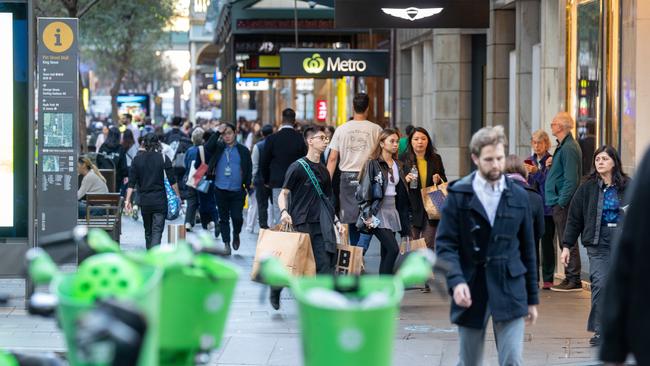Patrick Carlyon: Predictable hysteria has greeted the NSW government after ordering workers back in the office
Covid ended more than two years ago and the assumption that workers en masse could choose home over the workplace is laughable, writes Patrick Carlyon.
At Work
Don't miss out on the headlines from At Work. Followed categories will be added to My News.
Predictable hysteria has greeted the NSW government edict that public service workers should work “principally” in a workplace, as opposed to their bedroom with a packet of Twisties and a Pepsi tucked out of sight of the Zoom camera.
The pandemic ended more than two and a half years ago, when most of us stopped wearing masks or abiding by state government edicts invoked “for our protection”.
Yet the residual demand to work in your pyjamas (bad breath and deodorant optional), perhaps with Frankie, your dog or cat, perched at your feet, remains one of the mysteries of our time.
Why didn’t the work world snap back to pre-pandemic assumptions once the pandemic ended?
Perhaps the language of the NSW government edict is instructive.
Labelled as “bold” and a “gamechanger”, it asserted that WFH should not be taken for granted or considered unlimited.
There may be other ways to describe this point.

Workers, as abetted by their unions, have, to put it politely, been collectively taking the mickey.
It’s easier to work at home. You do less. You can schedule walks of the dog, massages, and some smashed avo at the cafe down the road between online check-ins.
No one need know if you’re washing the car or checking out tiles for the new bathroom when you might otherwise be occupied finishing a work report.
Better still, you need not adopt your interested face, under sufferance, when office colleagues seek to update you on their stress/children/doctor’s appointments/disenchantment with the workplace.
WFH is and has been a free pass.
It seems to fold into a younger generation’s notion that they are doing their employer a service, as opposed to the other way around.
Young people are least likely to have family responsibilities.

Yet some (and certainly not all) seem fond of invoking “work-lifestyle balance” rhetoric that their older colleagues, burdened with the travails of sick kids and ailing parents, readily mock.
With WFH, young workers barely meet their older colleagues, from whom they might learn one or two things while chatting in the same building.
Many of them, it seems, believe that working “alongside” complete strangers for months or years is perfectly normal.
And WFH, in rough terms, poses a great divide – those older than 30, some of whom go along with it because it’s a lark, and some of those under 30 who think WFH is a right.
Cast back five years, or “ancient times” as they are now viewed, and no one thought to try to work at home unless they had pressing reasons.
Some Mums and Dads rightly tailored work arrangements that allowed them to combine the chaos of work with the mayhem of home.
And it had rightly gotten easier for them to do so.

Yet the assumption that workers en masse could choose home over the workplace was laughable.
Never mind that WFH has emptied our CBDs.
In Melbourne, the workforce will for now remain divided between the haves and have-nots.
Premier Jacinta Allan has invited any NSW public servants who feel outraged by the state government’s decree to head south, where they can still sit in their thongs and dabble in some work in between trips to the fridge/car wash/catch-ups-with-WFH-mates.
One benefit of WFH for those poor grunts, such as police officers, teachers and nurses who must front for work, is the traffic.
Melbourne peak hour is three days a week instead of five (it also seems to be much earlier of the evening). Driving to and from work can sometimes seem pleasing.
Down here, as with Queensland, the state government generally avoids anything that could be labelled as “bold”.

Public service workers are supposed to work in the office three days a week in Victoria, though it’s unclear whether anyone is keeping count.
And so what that office vacancy rates in Melbourne top the nation, at 18 per cent, or that so many wonderful cafes and restaurants have quietly slipped in to the night, humble victims of societal shifts that defy logic or economic health.
The Victorian government has been urged to “show more active leadership”.
But it seems unlikely that this will happen.
The unions wouldn’t like it.
Tumbleweeds are yet to be sighted in Swanston or Elizabeth Sts of Melbourne’s CBD, where evidence for the most proactive of on-site endeavours seems reserved for graffitists and the homeless.
But they can’t be far away.
Call the NSW edict “bold” if you wish. “Belated” seems more fitting.





